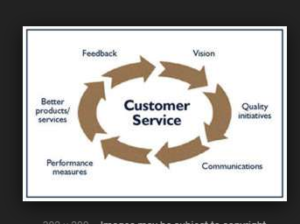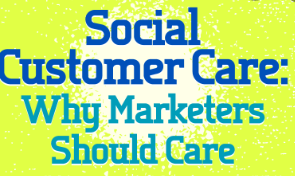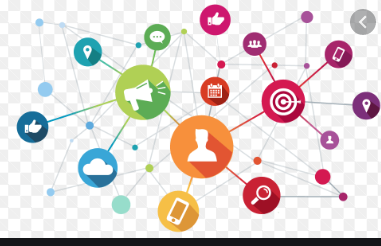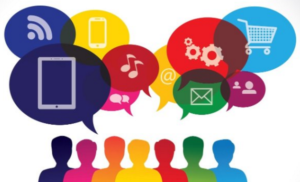Tag: customer insights
Customer Insights: 13 Creative Ideas for Improving Feedback
Do you assume a customer who doesn’t complain feels he is getting quality service or product? Is it a happy customer? We are often surprised when clients make these assumptions. Customer retention strategies depend heavily on all customer insights … knowing who is happy and who isn’t. So using creative ideas for better customer insights from customers is critical.

Check out our thoughts on customer focus.
Quality in a service or product is not what you put into it. It is what the client or customer gets out of it.
–Peter Drucker
With the advent of the Internet, the number of marketing options available to both budding and experienced entrepreneurs has become staggering.
According to a Bain & Company survey, major companies typically lose half of their customers over a five-year period. Notice, it usually wasn’t ‘one year’ or ‘suddenly’. Customers have a tipping point. They get unhappy bit by bit and then it’s the last straw. So, if you make the assumption that all your customers are happy with you …you may be in for a surprise.
Related: Lessons from the Yale Customer Insights Conference
It’s never fun to hear what you’re doing wrong or just not being the best you can be. However, there are many reasons to pay attention to the customer insights:
By asking specific follow-up questions, you can create specific solutions that improve your business and satisfy a customer’s concerns.
Complaints and suggestions are free insights … much cheaper and more valuable than the research you pay outside vendors to conduct.
Finding a new customer will cost you eight times as much as keeping an existing customer. Be accountable for customer insights and complaints, it’s easy to proclaim ‘ I’m accountable’. It’s much tougher to say ‘Call my cell.’
Who can deny that gathering customer insights is crucial to providing excellent service?
However, it can be very difficult actually to go looking for feedback. You have to dive in headfirst, let go of your ego, and be prepared to swallow your pride to face some hard-to-swallow truths about your business.
You can easily ask customers more actionable questions to get the most out of those rare moments when you have the chance to ask them. Here are some awesome examples:

Customer insights examples … who do you serve best?
If there is an employee who stands out for helping your customers stay loyal, this is the perfect opportunity to find out.
Best employees … If the customer identifies an employee by name and does not offer any more information that often means this employee is best of the “just ok.”
If the answer includes sincere superlatives, details about WHAT is so great about this employee or says “You need to hire more like that one,” you have just found a very valuable, “model” employee. Investigate what your star offers to customers and replicate as much as you can.
Look for details … what specifically pleased you the most?
I once received an answer of “You do a great job communicating the state of the big picture.” The “big picture” was totally not the focus of the initiative or even what I thought worked.
The real focus was all about the individual touchpoints and micro-interactions, but I’m thankful I received this response. It presented ways I was able to build on and expand for future projects.
Customer insights … how could we make things easier for you?
Remove the constraints your customers have. Consider ways they can help you help them. We often assume certain things can’t change; then we sit frozen like deer in the headlights overcome with frustration.
If we lift those restrictions on our thinking, we can better visualize how things COULD be, which is liberating and empowering.
What would you like to see us add to our products or services?
We humans often don’t know what we want. Asking “what would make you satisfied?” leads to a lot of “um” and “I’m not sure” replies. “What should we add” encourages customers to think more about what’s missing.
Consider the issue of Internet Privacy
Running a business today almost certainly means having a digital presence, and being connected to the Internet. While the benefits of this transformation are many, the security issues are still a daily challenge, with many solutions in the marketplace to address them.
Now internet service providers can sell the browsing habits of their customers to advertisers. The move, which critics charge will fundamentally undermine consumer privacy in the US.
Yes, internet service providers (ISPs) such as Comcast, Verizon, and AT&T are free to track all your browsing behavior and sell it to advertisers without consent. ISPs have access to literally all of your browsing behavior – they act as a gateway for all of your web visits, clicks, searches, app downloads, and video streams.
This represents a huge treasure trove of personal data, including health concerns, shopping habits, and porn preferences. ISPs want to use this data to deliver personalized advertising.
Let’s start with understanding the definition of a Virtual Private Network (VPN) as a solution.
A VPN is a group of computers networked together over a public network like the internet. And these connected computers are a virtual version of a secure, physical network. They are linked together so they can share information by securing internet traffic with encrypted connections over networks that are less secure.
Essentially, a VPN ensures the level of security to systems that are connected is appropriate if/when the existing network infrastructure alone is not capable of providing it.
A VPN redirects your internet traffic to disguise where your computer, phone or other device is when it makes contact with websites. It also encrypts the information you send across the internet so that it’s unreadable to anyone who wants to intercept that traffic – including ISPs.
Ask both satisfied and unsatisfied customers for more details
For example: What can we do to improve the checkout process? Or what should we do to make browsing online easier?
Questions like this will lead to a much more valuable insight than open-ended questions like, what can we do to improve?
Customer insights and analytics … What have we forgotten that you might have needed?
Make sure everyone, including your customers and employees, is comfortable telling you when things are not perfect. It gives you the opportunity to apologize, to promise to make corrections, or at least to say “Thank you for telling me” in a more timely fashion.
When you have the rare privilege of communicating with any customer, it is your opportunity not only to make good on a poor part of the experience or transaction but to zero in on what might be an ongoing or common issue nobody bothered to complain about.
I like to say “Question everything and everyone!” It’s a way to get truly honest, constructive feedback when you may not know what truth you need to hear. People, in general, are friendly.
We like to see people happy and generally, hate to criticize things they are proud of. Look for as many ways as you can to open that door. You’ll learn amazing things as long as you listen with customer-centric ears.
Remember these simple suggestions to improve further gaining the best insights from your customers:

Better customer insight … never overlook details
Don’t overlook details … as unimportant. Until you put all the pieces of the puzzle together, it is difficult to know the importance of details.
Connect
Connect… and then move closer. You learn most when you build close relationships with your customers.
Dig deeper
Keep pressing … ‘just one more question.’ Each new fact that you discover often generates new information needs.
Use your personal experience
Put your personal experience to work, but don’t be biased by it. Don’t let your values and views take charge of getting the true picture.
Look for connections
Spot connections between seemingly unrelated observations. Keep iterating and building the puzzle of facts and their relationships.
Immerse your perspective
Look for different perspectives. from alternative roles. Try and eliminate the single role perspective at all costs and view things from as many angles as possible.
Validate and continually refine
You are never done with customer insights you have gained. Validate and continue to refine what you have learned.
What are the most actionable ways you receive customer insights? We’d love to hear.
The bottom line
Remember, customers, don’t care what you do. They only care what they’re left with after you have done it.

Do you have a lesson about making your customer focus better you can share with this community? Have any questions or comments to add in the section below?
So what’s the conclusion? The conclusion is there is no conclusion. There is only the next step. And that next step is completely up to you.
It’s up to you to keep improving your customer attention and focus. Lessons are all around you. In many situations, your competitor may be providing the ideas and or inspiration. But the key is in knowing that it is within you already.
All you get is what you bring to the fight. And that fight gets better every day you learn and apply new lessons.
Test. Learn. Improve. Repeat.
All you get is what you bring to the fight. And that fight gets better every day you learn and apply new insights that you have learned.
When things are not what you want them to be, what’s most important is your next step.
Are you devoting enough energy to improving your continuous learning for yourself and your team?
Mike Schoultz is the founder of Digital Spark Marketing, a digital marketing and customer service agency. With 40 years of business experience, he blogs on topics that relate to improving the performance of your business. Find them on G+, Twitter, and LinkedIn.
Digital Spark Marketing will stretch your thinking and your ability to adapt to change. We also provide some fun and inspiration along the way.
Check out these additional articles on customer insights from our library:
Generational Differences … What Matters for Marketing Campaigns?
The Story of How JetBlue Turns Customers into Advocates
An Actionable Approach to Target Market Segmentation?
9 Steps to Making Your Social Customer Care the Best in Local Markets
Maya certainly has a firm grasp of the subject on social customer care, doesn’t she? Feelings and emotions are the keys to social customer care. And social customer care is really the key to your marketing campaigns … particularly word of mouth marketing. So you are getting the picture, right?

People will forget what you said, people will forget what you did, but people will never forget how you made them feel..
– Maya Angelou
Social customer care is no longer an emerging trend to merely keep an eye on – it’s a burgeoning movement that companies would be very wise to embrace. Instead of returning to a store or calling a helpline, people are increasingly turning to social media to resolve their gripes. It is called social customer care.
Customer care and retention efforts are most effective when they’re proactive, not reactive. In other words, it’s much easier to set customers up for success than to frantically rescue at-risk customers later on. Proactive customer support involves providing your customer with the necessary resources to succeed right from day one, not just when things go wrong.
With everyone so focused on the very big and positive impact that social customer care can have on the customer experience, many companies fail to realize that social customer care can have just as big and positive an impact on the employee experience. And that alone multiplies the importance of social customer care to customer experience design.
The fact that approaches to social customer care can vary adds to this challenge. Some companies are using social channels to resolve customer concerns and questions publicly, while others prefer to take social feedback offline and route customers to phones or online chats. Some are investing in social-listening tools and vendors, while others are creating in-house social-care teams.
In the end, the biggest challenge is finding the right balance. That is would we will address today … steps to achieving the best in social customer care.
Here are 9 steps we recommend our clients take to achieve these goals of being best and balanced:
Select your channels
To select your best channels you must know who your customers are and do good research. Look at the data and study trends. This will help you determine what consumers are thinking and saying, what channels are most popular, and whether you have the resources to deal with issues.
Gain customer insights

The data you gather through social media monitoring can be a valuable source for customer insights. Lots of them that simply can’t be found elsewhere.
Empower your staff
Empower the social customer service team to act quickly. Make them feel completely supported. If you can’t trust them, then you have the wrong team.
Etiquette
Judge whether customers want your help and engagement before you jump in.
Prioritization
Define your social media engagement plans based on your objective priorities. And don’t make the mistake of underestimating the time required to do the job well.
Connect multiple channels
Conversations with customers will quickly spread between channels. Businesses need to be able to monitor across multiple channels.
Employ social media tools

By now you are probably very aware of how much time social media can consume. Social media tools are available to reduce the time requirements and improve your performance.
Choose your tools to combine an ability to both listen and engage.
Establish a listening program
Here you need to consider the terms you will monitor carefully. Pay particular attention to the mention of your brand and miscellaneous negative terms.
Over achieve expectations
Without an effective social media listening program in place, brands cannot hope to live up to customer expectations, let alone overachieve. Listen, interpret, and then act.
This is your time to create remarkable social customer care. With good continuity and persistence, you will be able to develop lasting relationships with your customers. Lead with initiative and own the moment. Dive in today and notice your business improvements build.
Remember this simple fact. Brands are verbs. What they do matters more than what they say. Let your actions be your difference-maker.
Like this short blog? Follow Digital Spark Marketing on LinkedIn for 3-4 short, interesting blogs, stories per week.
Read more on customer service from Digital Spark Marketing’s blog library:
The Business Intelligence Process Part 3 Competitive Analysis
10 Entrepreneur Lessons You Need to Know
Collaboration and Partnerships Are Key to Business Growth
Remarkable Marketing Using 17 Customer Intelligence Techniques
Peter Drucker was quoted: The customer never buys what you think you sell. Drucker certainly understood the basics of improving customer intelligence techniques, didn’t he?
The end state quality of what the customer received is what counts. And the better you know the customer and what drives his decisions; the better off you’ll be to winning his business.
It is that simple.
Check out our thoughts on customer focus.
Most valuable customers
We categorize customers into four basic groups: prospects, customers, advocates, and former clients. The most important group is the proponents.
You should be paying special attention to them and those in the customer group that you believe could become advocates. So their insights are most valuable, by far.
What are customer insights?
Customer insights are associations between objects, actions, and communications that solve or help solve new customer problems.
Related: Complaints Are Sources of Remarkable Customer Retention Strategies
Customer intelligence … customer reluctance
There are 3 key reasons customers are reluctant to give inputs to business: business makes it difficult and inconvenient; there is no mutual equitable exchange of value for the input, and employees act like they don’t care.
Your job is to eliminate this reluctance by fixing these issues as soon as you can.
Putting a priority on searching for change and opportunities that arise from change? Customer insight is a great place to start. A simple analysis of these ideas can be a great way to improve your business.
Yet many businesses either don’t put a priority on collecting inputs from their customers or don’t know how.
Now before I give you some of your clients’ ways to achieve smashing concern insights, let me give you an example of ways these insights can aid your marketing.
Just before Labor Day, I was in a local restaurant for breakfast. Since there was a short line, I was reading the bulletin board to kill the time.
On the board, someone named Nancy was advertising her services as a babysitter.
I’d give this ad a “B-” because Nancy did a good job — but she could have dramatically increased her chances of getting hired and added a minimum of 20% to her hourly rate.
The GOOD
She includes the fact that she is a student, which is good since parents need flexibility.
She notes that she has CPR experience, which is great and is willing to cook and do light cleaning. The perfect way to add to your value.
She does not include her hourly rate, which would have been pointless. With babysitters, first get them to love and trust you, then discuss price.
THE BAD
She wastes space by saying things like “I love children.” Of course, you do. I love oxygen, but I don’t tell people about it.
More importantly — and now we’re getting into the psychology of this flyer — what do parents care about? Care about? What’s their #1 fear?
#1 fear: Safety and security of their children.
#2 fear: That you’ll be IRRESPONSIBLE, like missing an obligation and, leaving them stranded.
If you had developed excellent customer insights, you perhaps could have solved those two concerns and made price necessarily become a mere triviality.
99% of babysitters will waste time talking things that customers care very little about their love of children, their college major, or their interests.
Remember you need to talk to customers about their interests and not yours and that is where insights take center stage, eh?
Nancy has hints of a terrific banner — but she falls short where it counts.
For example, she talks about how she has six years’ experience. Where are the testimonials from past clients?
Where are the specific things she helped prior kids do (e.g., learn to read, take them to swimming lessons, coordinate their weekly meals)?
Where is the testimonial from her boss, which says “Nancy is the most responsible aide I have ever worked with…she has never missed a commitment.”
Do you see the point?
This is just a FLYER right now. It’s not true, full marketing. It’s not bad, but it’s not GREAT because she hasn’t thought carefully about who she wants to reach out to.
She’s targeting “everyone,” when she should be targeting a VERY specific list of people. Moms, who have kids (which age?), are upper-middle class, and are looking for their (first-ever?) babysitter. Each of these characteristics subtly changes the way she approaches her marketing.
Once she’s clear on who EXACTLY she’s looking for, all tactics fall from that. For example, once she knows precisely who she’s targeting (not “everyone,”) she would probably reconsider hanging flyers in local restaurants that these clients frequent.
The bottom line:
With training and experience in obtaining customer insights, you can start to see psychology — or the lack of it — everywhere.
And with some subtle tweaks, you can dramatically increase your chances of better earnings with better clients who pay more.
Customer intelligence tools: ways to achieve smashing consumer insights
Listen, observe, and draw conclusions
Not rocket science here. Pay attention to what customers are saying and what they are doing.
You will then be in an excellent position to draw real insight conclusions.
Customer collaboration
Instead of asking customers to watch and just passively consume, try getting them to participate actively, create and collaborate in activities related to your business.
For example, ask them to define what would make shopping easier for them.
Customer insight techniques … share expertise freely
Relevant and helpful knowledge is usually always welcome. This domain information helps build trust.
Build relationships
Be more personable and social. Create and nurture customer relationships. Create friends who will share feedback more easily.

Show you listen
Listen to the right ideas. Pick the best ones and act quickly to implement.
Show customers you are listening by publicizing the change with simple recognition of the basis of change.
Customer intelligence examples, two-way dialog on decisions
Ultimately focus customer conversation on helping them with purchase decisions. Listen and learn from what the customer has to say.
Connect more and different information
Connect the dots on all the bits and pieces of information you are gathering. The more connections you can make, the more insights you can find.
Integrate social media monitoring
More and more business is moving online. And customer communication as well.
Pick some tools to help you monitor customer feedback (both intended and casual) on social media channels.
Connect
Connect and always try to move closer to all your customers and especially your best customers.
You learn most when you build close relationships with them.
Immerse your perspective
Change your perspective and consider alternative roles.
Try and eliminate the single character perspective at all costs and view things from as many angles as possible.
Never overlook details
There are no details you should consider as ‘unimportant.’
Until you put all the pieces of the puzzle together, it ‘s hard to know the importance of each of these customer needs and priorities.
Look for connections
Do you consider connections between seemingly unrelated observations? Try and connect the dots between different facts and observations?
It is crucial to continue iterating and building the puzzle of events and their relationships.
Always dig deeper
Digging deeper is essential for uncovering more details. Can you think of ‘just one more question’?
Use all of your curiosity and imagination. Each new fact that you discover often generates new information needs.
Use your personal experience
Use what you have learned previously, but don’t be biased by it.
Don’t let your values and views take charge of getting the real picture.
Validate and continually refine
Always look for evidence to prove regularly and improve the insights you have gained.
Communicate in new ways
Lots of new communication channels exist today, particularly online. Put more of these channels to work.
Do some experimenting to find which ones work best for you.
Everyone’s responsibility
Make collecting customer inputs and converting them to insights everyone’s responsibility.
Get the employee staff together every few weeks to exchange information.
The bottom line
Here’s the thing, social isn’t just a new way of marketing, it’s a new way of running a business.
Many small businesses certainly have figured this out and are using social marketing and improved customer insights to grow their business rapidly.
The truth is that creative marketing is hard work. There are no silver bullets. The only way to create success is to get your ideas out there, find the flaws and get to work fixing them.



